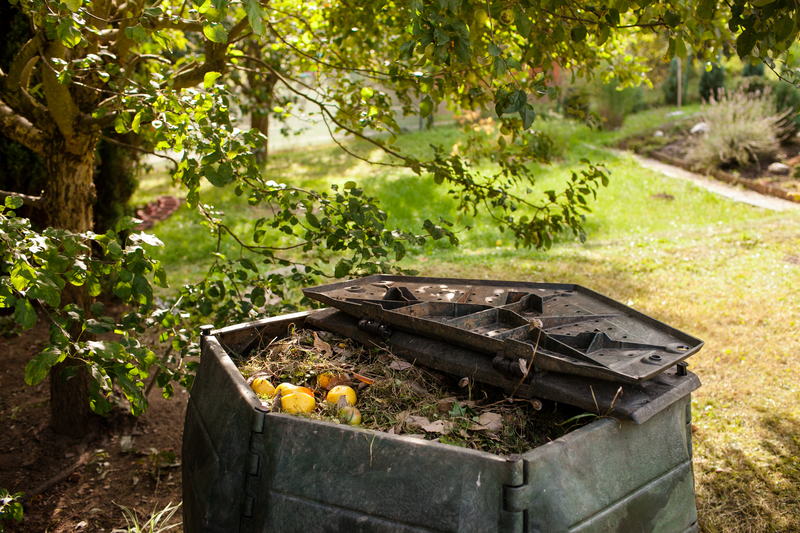Minimalist Packaging Techniques
Posted on 14/02/2025
Packaging plays an essential role in modern consumer experiences, but traditional packaging methods often result in excess waste and contribute to environmental degradation. In response to these concerns, minimalist packaging techniques are emerging as a sustainable and efficient alternative. This article will explore the principles, benefits, and practical applications of minimalist packaging.
Understanding Minimalist Packaging
Minimalist packaging is a design philosophy centered around simplicity, efficiency, and sustainability. It focuses on reducing waste, using minimal materials, and creating packaging that serves its purpose without unnecessary embellishments. This approach is inherently tied to environmentally conscious practices and aligns with growing consumer demand for sustainable products.

Principles of Minimalist Packaging
Several core principles underpin minimalist packaging techniques:
Reduction of Materials
The primary goal is to use the least amount of material necessary without compromising the packaging's integrity. This involves selecting lightweight alternatives and designing packages that maximize the use of available resources.
Simplicity in Design
Minimalist packaging avoids excessive graphics, colors, and text. The design is clean, straightforward, and focuses on the essentials, often resulting in a more aesthetically pleasing product.
Recyclability and Reusability
Materials used in minimalist packaging are usually recyclable or biodegradable. Additionally, the design may incorporate features that encourage reusability, thereby extending the life cycle of the packaging.
Benefits of Minimalist Packaging
Implementing minimalist packaging techniques offers a multitude of advantages:
Environmental Impact
By reducing material usage and opting for recyclable or biodegradable options, minimalist packaging significantly lowers environmental pollution. This, in turn, helps conserve natural resources and decreases the amount of waste that ends up in landfills.
Cost Efficiency
Less material usage directly translates to cost savings in production. Moreover, lighter packages result in lower shipping costs, providing economic benefits to the manufacturer and consumers alike.
Enhanced Aesthetics
The clean, simple design of minimalist packaging often appeals to consumers who value sophistication and elegance. This can enhance brand perception and boost sales, as the package itself serves as a selling point.
Practical Applications of Minimalist Packaging
Minimalist packaging can be applied across various industries. Here are some practical applications:
Food and Beverage Industry
The food and beverage industry can greatly benefit from minimalist packaging. For example, reducing plastic in bottled beverages and opting for glass or aluminum cans enhances sustainability. Simple labels with crucial information can replace elaborate multi-layered packaging, making the products more eco-friendly.
Cosmetics and Personal Care
In the cosmetics industry, minimalist packaging can be seen in the use of simple, elegant containers that prioritize functionality over elaborate decoration. Refillable containers and the use of recycled materials are becoming more common, reflecting the industry's shift towards sustainability.
Electronics and Gadgets
The packaging of electronics and gadgets has traditionally involved a lot of waste. However, brands are now adopting minimalist designs with smaller boxes that use less foam and plastic inserts. This not only reduces waste but also enhances the unboxing experience.
Fashion and Apparel
Many fashion brands are switching to minimalist packaging by using biodegradable bags, recycled cardboard boxes, and minimalistic tags. This not only reduces waste but also aligns the brand image with modern, eco-conscious values.
Challenges in Implementing Minimalist Packaging
While the advantages are clear, there are challenges associated with implementing minimalist packaging techniques:
Balancing Durability and Minimalism
Ensuring that minimalist packaging remains durable enough to protect the product during transit and storage is a significant challenge. Finding the right materials that can provide adequate protection while still adhering to minimalist principles requires careful consideration and innovation.
Consumer Perception
Consumers might equate minimalist packaging with a lack of quality or perceive it as less attractive compared to more elaborate packaging. Companies need to educate consumers about the benefits of minimalist packaging to overcome this barrier.
Regulatory Compliance
Different regions have various packaging regulations that must be met. Navigating these regulations while trying to adhere to minimalist principles can be complicated and may require additional resources.

The Future of Minimalist Packaging
The trajectory of minimalist packaging seems promising as both consumers and businesses become more environmentally conscious. Innovations in materials science are likely to produce new, sustainable materials that lend themselves well to minimalist principles. Moreover, advances in digital printing technology will enable more precise and efficient packaging design.
Innovation and Customization
The future will likely see more personalized minimalist packaging options. Companies could utilize customer data to design packages that speak directly to individual preferences while still adhering to minimalist principles.
Collaborative Efforts
Industry-wide collaborations and regulatory support will be crucial. Governments and businesses working together can accelerate the adoption of minimalist packaging techniques and ensure they are applied across various sectors effectively.
Conclusion
Minimalist packaging techniques offer a sustainable, cost-effective, and aesthetically pleasing alternative to traditional packaging methods. By focusing on the reduction of materials, simplicity in design, and the use of recyclable or biodegradable materials, businesses can meet the growing demand for eco-friendly products. Despite challenges in balancing durability, consumer perception, and regulatory compliance, the future of minimalist packaging appears bright with continuous innovation and collaborative efforts. As we move forward, embracing minimalist packaging will be key to creating a more sustainable and responsible consumer market.






